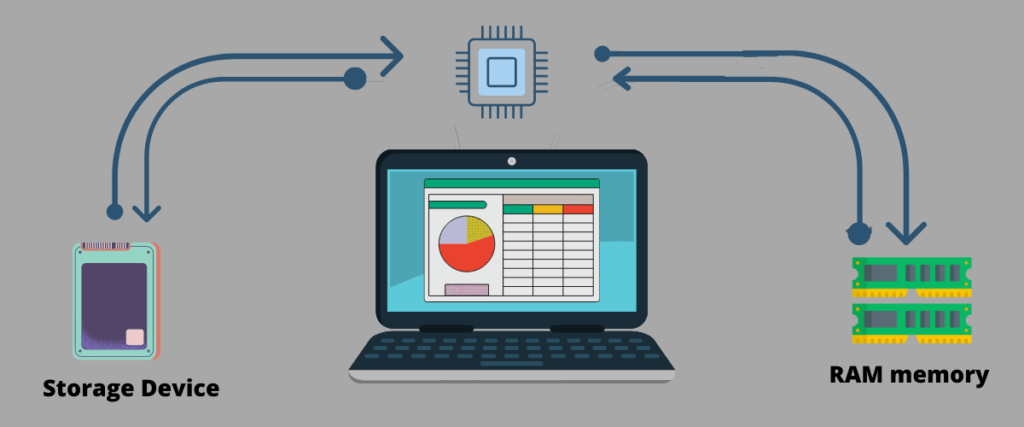Ram is one of the essential components of your Laptop or computer. It plays a crucial role in everything from loading up your system with computer resources, to transferring files and apps between your computer and your hard drive.
But Without adequate amounts of RAM, it may be difficult for the computer to use all of its memory to run applications, read and write to your hard drive. Too much RAM can also slow down the computer and prevent it from functioning correctly.
To get the best ram for your computer, you need to know how much RAM (Random Access Memory) you should buy. In this article, I will discuss How to choose the right ram for my laptop and how to get the best from it. This RAM guide helps you to choose the right RAM size depending on the type of usage.
How to choose the right ram for my laptop
| Type of RAM | Style of use | users |
|---|---|---|
| 4GB DDR4 (Must be upgradable up to 8GB or 16GB) | Basic use | For Beginners |
| 8GB DDR4 | Daily uses (Browsing ,Email ,etc) | Students ,home, office, graduates, |
| 16GB DDR4 | gaming, editing, multitasking office works | Normal gamers ,editors and other all other works |
| 32GB DDR4 | Hard core gaming, professional 3D editing | Hard core gaming ,editing etc. |
| 64GB DDR4 | Expert professionals for particular usage | Professionals for high end works |
Random Access Memory (RAM) is a short-term memory that stores quickly accessible data(Apps, files, movies, songs, software, etc.) from HDD or SSD storage.
Let us understand with an example: Let’s imagine you are at the office, and you have someone working. What will you do? you will bring files from the shelf and put them on the table and start working.

As shown in the picture the shelf where you put all your files or documents that is your memory (HDD or SSD) that stores all your data, the files you bring and put it on the table, the table is your RAM where you open your files and do your work and files means your data(Apps, files, images etc.)
How does RAM works?

Operations like browsing the web, loading applications, and editing a spreadsheet all use short-term data access. The speed and amount of memory you have installed play a key role in your system’s performance. To put this into context, say you want to access data from a spreadsheet.
You click to open a document, and the software program and the document load from your storage drive. Then your system’s processor transfers this data from long-term storage (Storage Device) to faster short-term memory (RAM memory) so that you get quicker responses. Your program loads. And now the data you are using is available for quick access from your memory. Because memory is like your system’s bank of available workspace, it has a big impact on performance.
Types of RAM
There are two types of RAMs
- Static RAM (SRAM)
- Dynamic RAM (DRAM)

1. Static RAM (SRAM)
SRAM is a type of random-access memory that uses latching circuits to store each bit; that is, the latching circuitry holds the data until it is overwritten. It is volatile in that it loses its stored state if power is lost.
2. Dynamic RAM (DRAM)
Dynamic random-access memory (DRAM) is a type of random-access semiconductor memory that stores each bit of data in a memory cell, usually consisting of a tiny capacitor and a transistor, both typically made of some metal oxide.
In DRAM we have DDR SDRAM which stands for Double Data Rate Synchronous Dynamic Random-Access Memory in this type of RAM we have 4th generation RAMs that are DDR1, DDR2, DDR3, and DDR4. On most laptops or computers, you can find the latest generation RAM that is DDR4.
Ram speeds chart

what is Antiglare display?


I’m still learning from you, as I’m trying to reach my goals. I certainly enjoy reading all that is written on your website.Keep the posts coming. I enjoyed it!
I have been browsing on-line greater than three hours as of late, yet I never discovered any fascinating article like yours. It is beautiful value sufficient for me. Personally, if all website owners and bloggers made excellent content as you did, the internet will likely be a lot more helpful than ever before.